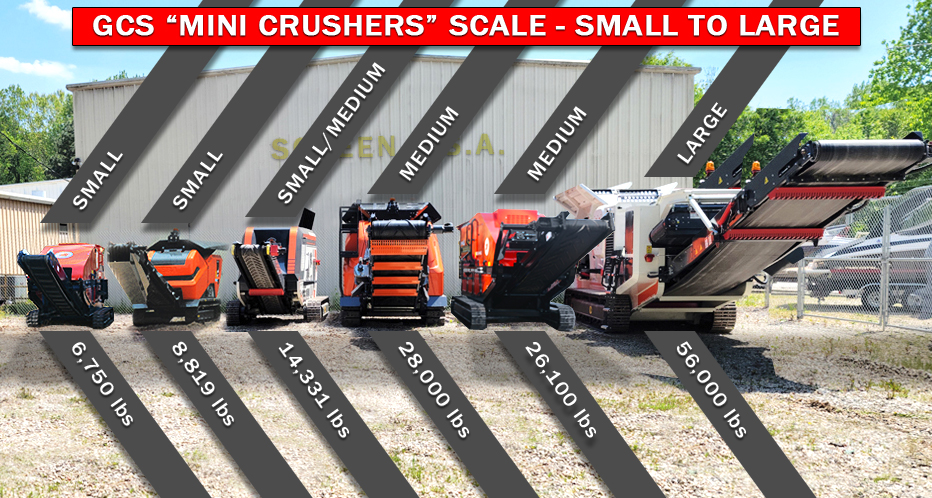This is an excellent question as most consumers are first time buyers and rarely educated on the differences between the various brands of small crushers. Most who call us have seen a couple brands and assume they are all the same. These consumers are just looking to compare price which is a major mistake; there are many differences between the various makes/models you must be aware of!
The first question that must be asked is, what material you want to crush?
If the answer is concrete, block, brick, or soft rock then a small/mini crusher could work for you. If the answer is river rock, hard rock, or asphalt, then do not purchase any of the small crushers currently on the market; it is our experience that they will not last in these applications. Many have tried to convince us otherwise, and ultimately the choice is yours, but we have a great deal of repeat business and would never jeopardize that to sell a machine. With that in mind, if you want to crush hard rock or asphalt with a small/mini crusher, go elsewhere as it will only be a matter of time until you have catastrophic loss.
Once we confirm that your material is safe to run through the small/mini crushers then we need to know the size of material you need to feed and the size you want it reduced down to. In addition, we need to know the production that you want to achieve. Remember, small crushers equate to smaller production.
Here are the differences between the major competitors of small crushers:
Feeder: Vibratory feeders are the industry standard. These feeders are heavy-duty and highly preferred over a belt feeder. In our opinion, manufacturers only use belt feeders to save money. They are inferior in every way. Rebar can puncture a hole in the belt and they are continuously ripping due to the application. We have never experienced a steel vibratory feeder ripping due to coming in contact with other steel.
Jaw Opening: This is tricky as most companies advertise jaw opening but not jaw surface. The Jaw opening is the actual opening that the material can fall down into from the feeder. The Jaw Surface is the surface area (width & length) of the jaw plates that actually hit the material. This surface area is most important as it dictates the production.
Let’s look at Mini Crusher #1 with a jaw opening of 20” x 10” and Mini Crusher #2 with an opening of 20” x 12”. Most first- time buyers will be convinced that these are approximately the same. Not true. We must know the third dimension, the Jaw Surface, of the jaw plates. Now let’s say that Mini Crusher #1 has jaw plates that are 18” x 21” while Mini Crusher #2 is equipped with jaw plates that are 20” x 28”. If you do the math, the jaw surface area is 378 sq.in. on #1 compared to 560 sq.in. on #2. Since there is a direct relationship between jaw surface area and production, the second crusher will yield 30% more production. This is significant and a game changer.
Of our selection, the most popular small crusher is the Evortle CT535. Although it is not the smallest or least expensive mini crusher we sell, it is the most popular and the reason is simple. The smaller crushers are just too small. Their production is too slow for a skidsteer and our customers are not satisfied with their production. The Evortle CT535 is situated in size between the small and larger "mini crushers", so it is priced right and will produce well. In addition, it weighs 14,331 pounds compared to the smaller 8,819 pound machine (indicative of a heavier-duty build). It is definitely worth spending a little more money for a heavier duty crusher that will crush more production.
See all of our Jaw Crusher selections

*Some genuinely "large" crushers can weigh beyond 200,000 lbs
